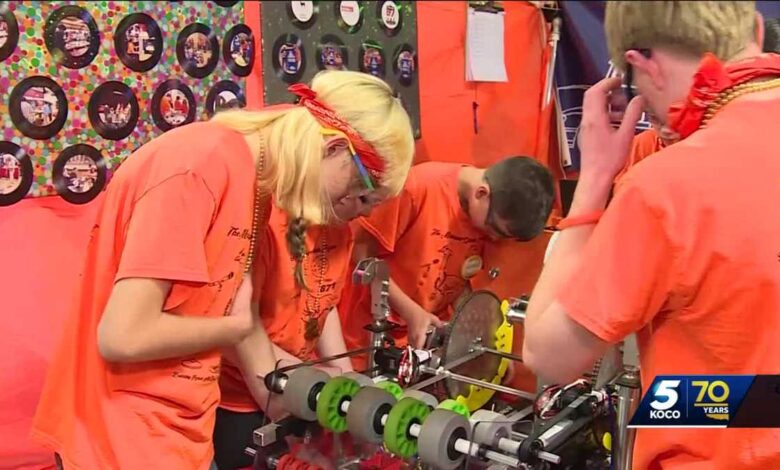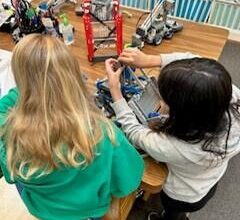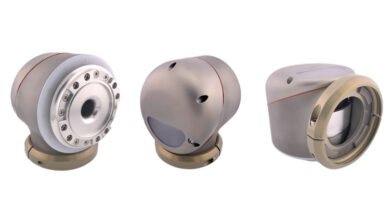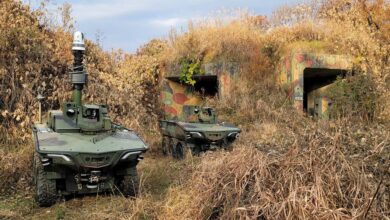High school students shine in regional robotics competition

High school students from Oklahoma and nearby states recently showcased their skills in a regional robotics competition, preparing them for future careers in STEM fields.| MORE | STEM SPOTLIGHT: Program teaches students about aviation, aerospace careersThe students work for weeks, using their skills in science, math and technology to build and design industrial-size robots that solve a problems. The teams then showcased their robots in the FIRST Robotics Competition.”It’s not just programming. It’s not just building,” Dylan Campbell, a student participating in the robotics competition, said. “We have to work together as a team with our coaches to come up with designs for our robot and make our own design unique and make it the best.” Campbell said teamwork is a big part of the competition. “I drive it with teammate Erica. So, I do the driving. She works the arm and everything else on the robot,” Campbell said. The hard work led to competitions like the Oklahoma regional that took place in Oklahoma City. “This is different from other sports because it’s not all about winning. It’s about the learning aspect and just working together, working together as a team,” Campbell said. Three Oklahoma teams advanced from this competition to the International Robotics Championship. Team 2718, the “E-Possums,” is housed at Science Museum Oklahoma and consists of high school students from around OKC. At the championship, this team won their division and made it to playoffs. Team 2373, the “Crickets,” from the Caddo Kiowa Technology Center was also there, and Team 1561, the “RoboDucks,” from the Francis Tuttle Technology Center also competed at the world championship. Because of the different roles on each team, students have a better idea of what their path might look like after high school. “I found out that I didn’t want to do electrical engineering, and I switched it to mechanical just because of firsthand what I was doing,” Campbell said. The challenges not only determine how well the robots work but also the power of collaboration and the determination of the students.
High school students from Oklahoma and nearby states recently showcased their skills in a regional robotics competition, preparing them for future careers in STEM fields.
| MORE | STEM SPOTLIGHT: Program teaches students about aviation, aerospace careers
The students work for weeks, using their skills in science, math and technology to build and design industrial-size robots that solve a problems. The teams then showcased their robots in the FIRST Robotics Competition.
“It’s not just programming. It’s not just building,” Dylan Campbell, a student participating in the robotics competition, said. “We have to work together as a team with our coaches to come up with designs for our robot and make our own design unique and make it the best.”
Campbell said teamwork is a big part of the competition.
“I drive it with teammate Erica. So, I do the driving. She works the arm and everything else on the robot,” Campbell said.
The hard work led to competitions like the Oklahoma regional that took place in Oklahoma City.
“This is different from other sports because it’s not all about winning. It’s about the learning aspect and just working together, working together as a team,” Campbell said.
Three Oklahoma teams advanced from this competition to the International Robotics Championship. Team 2718, the “E-Possums,” is housed at Science Museum Oklahoma and consists of high school students from around OKC.
At the championship, this team won their division and made it to playoffs.
Team 2373, the “Crickets,” from the Caddo Kiowa Technology Center was also there, and Team 1561, the “RoboDucks,” from the Francis Tuttle Technology Center also competed at the world championship.
Because of the different roles on each team, students have a better idea of what their path might look like after high school.
“I found out that I didn’t want to do electrical engineering, and I switched it to mechanical just because of firsthand what I was doing,” Campbell said.
The challenges not only determine how well the robots work but also the power of collaboration and the determination of the students.



